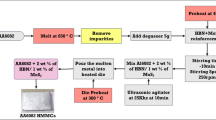Abstract
Carbon fiber-reinforced polymer (CFRP) composites have been widely used in the aerospace industry due to their excellent mechanical properties. CFRP machining is still a challenging task for manufacturers due to its high temperature-sensitivity and poor machinability. Cryogenic machining is believed to be an effective and eco-friendly way to solve the aforementioned problem. This work primarily compared the machinability and machined surface quality of CFRP laminates under dry and supercritical CO2 (scCO2)-based cryogenic conditions. A series of tests were carried out under different cutting conditions, in which the feed rate, cutting speed, and cooling method were considered. To reveal the material removal mechanisms under different cooling conditions, the tribology and micro-hardness tests were innovatively carried out under different temperatures. The obtained results show that the scCO2-based cooling method is suitable for machining CFRP materials. Under cryogenic cutting conditions, the machined surface quality is considerably improved despite that the cutting force presents higher magnitudes compared to those under dry cutting. The improvement of surface quality under cryogenic cooling method is attributed to avoidance the degradation of material properties caused by high temperatures during dry cutting.


















Similar content being viewed by others
References
Qiu, X., Li, P., Li, C., Niu, Q., Chen, A., Ouyang, P., & Ko, T. J. (2019). New compound drill bit for damage reduction in drilling CFRP. International Journal of Precision Engineering and Manufacturing-Green Technology, 6(1), 75–87. https://doi.org/10.1007/s40684-019-00026-3
An, Q., Cai, C., Cai, X., & Chen, M. (2019). Experimental investigation on the cutting mechanism and surface generation in orthogonal cutting of UD-CFRP laminates. Composite Structures, 230, 111441.
Xu, J., Ji, M., Davim, J. P., Chen, M., El Mansori, M., & Krishnaraj, V. (2020). Comparative study of minimum quantity lubrication and dry drilling of CFRP/titanium stacks using TiAlN and diamond coated drills. Composite Structures, 234, 111727.
An, Q., Ming, W., Cai, X., & Chen, M. (2015). Study on the cutting mechanics characteristics of high-strength UD-CFRP laminates based on orthogonal cutting method. Composite Structures, 131, 374–383.
Ahmad Sobri, S., Heinemann, R., Whitehead, D., & Shuaib, N. A. (2018). Drilling strategy for thick carbon fiber reinforced polymer composites (CFRP): A preliminary assessment. Journal of Engineering and Technological Sciences. https://doi.org/10.5614/j.eng.technol.sci.2018.50.1.2
An, Q., Zou, F., Cai, X., Gao, M., & Chen, M. (2020). Experimental investigation on the machinability of CFRP/Invar36 hybrid co-cured material in turning operations. The International Journal of Advanced Manufacturing Technology, 107(9), 3715–3726. https://doi.org/10.1007/s00170-020-05333-7.
Zou, F., Dang, J., Cai, X., An, Q., Ming, W., & Chen, M. (2020). Hole quality and tool wear when dry drilling of a new developed metal/composite co-cured material. Proceedings of the Institution of Mechanical Engineers, Part B: Journal of Engineering Manufacture, 234(6–7), 980–992.
Dang, J., Zou, F., Cai, X., An, Q., Ming, W., & Chen, M. (2020). Experimental investigation on mechanical drilling of a newly developed CFRP/Al co-cured material. The International Journal of Advanced Manufacturing Technology, 106(3–4), 993–1004.
Ahmad Sobri, S., Heinemann, R., & Whitehead, D. (2021). Sequential laser-mechanical drilling of thick carbon fibre reinforced polymer composites (CFRP) for industrial applications. Polymers, 13(13), 2136.
Chen, W.-C. (1997). Some experimental investigations in the drilling of carbon fiber-reinforced plastic (CFRP) composite laminates. International Journal of Machine Tools and Manufacture, 37(8), 1097–1108.
Ramirez, C., Poulachon, G., Rossi, F., & M’Saoubi, R. (2014). Tool wear monitoring and hole surface quality during CFRP drilling. Procedia CIRP, 13, 163–168.
Nguyen, P. L., Vu, X. H., & Ferrier, E. (2019). Thermo-mechanical performance of carbon fiber reinforced polymer (CFRP), with and without fire protection material, under combined elevated temperature and mechanical loading conditions. Composites Part B: Engineering, 169, 164–173.
Chatterjee, A. (2009). Thermal degradation analysis of thermoset resins. Journal of applied polymer science, 114(3), 1417–1425.
Hancox, N. (1998). Thermal effects on polymer matrix composites: Part 2. Thermal degradation. Materials and design, 19(3), 93–97.
Ellis, B. (1993). Chemistry and technology of epoxy resins. Springer.
Argon, A. S. (2013). The physics of deformation and fracture of polymers. Cambridge University Press.
Barker, A. J., & Vangerko, H. (1983). Temperature dependence of elastic constants of CFRP. Composites, 14(1), 52–56.
Miyano, Y., Nakada, M., & Sekine, N. (2005). Accelerated testing for long-term durability of FRP laminates for marine use. Journal of Composite Materials, 39(1), 5–20.
Hirai, Y., Hamada, H., & Kim, J.-K. (1998). Impact response of woven glass-fabric composites—I.: Effect of fibre surface treatment. Composites Science and Technology, 58(1), 91–104.
Sala, G. (2000). Composite degradation due to fluid absorption. Composites Part B: Engineering, 31(5), 357–373.
Turner, J., Scaife, R. J., & El-Dessouky, H. (2015). Effect of machining coolant on integrity of CFRP composites. Advanced Manufacturing: Polymer and Composites Science, 1(1), 54–60.
Zhang, J., Wu, W., Li, C., Yang, M., Zhang, Y., Jia, D., Hou, Y., Li, R., Cao, H., & Ali, H. M. (2020). Convective heat transfer coefficient model under nanofluid minimum quantity lubrication coupled with cryogenic air grinding Ti–6Al–4V. International Journal of Precision Engineering and Manufacturing-Green Technology. https://doi.org/10.1007/s40684-020-00268-6
An, Q., & Dang, J. (2020). Cooling effects of cold mist jet with transient heat transfer on high-speed cutting of titanium alloy. International Journal of Precision Engineering and Manufacturing-Green Technology, 7(2), 271–282. https://doi.org/10.1007/s40684-019-00076-7
Koklu, U., & Morkavuk, S. (2019). Cryogenic drilling of carbon fiber-reinforced composite (CFRP). Surface Review and Letters, 26(09), 1950060.
Shah, P., & Khanna, N. (2020). Comprehensive machining analysis to establish cryogenic LN2 and LCO2 as sustainable cooling and lubrication techniques. Tribology International, 148, 106314. https://doi.org/10.1016/j.triboint.2020.106314.
Morkavuk, S., Köklü, U., Bağcı, M., & Gemi, L. (2018). Cryogenic machining of carbon fiber reinforced plastic (CFRP) composites and the effects of cryogenic treatment on tensile properties: A comparative study. Composites Part B: Engineering, 147, 1–11.
Khanna, N., Pusavec, F., Agrawal, C., & Krolczyk, G. M. (2020). Measurement and evaluation of hole attributes for drilling CFRP composites using an indigenously developed cryogenic machining facility. Measurement, 154, 107504.
Kumar, D., & Gururaja, S. (2020). Machining damage and surface integrity evaluation during milling of UD-CFRP laminates: Dry vs cryogenic. Composite Structures, 247, 112504. https://doi.org/10.1016/j.compstruct.2020.112504.
Priarone, P. C., Klocke, F., Faga, M. G., Lung, D., & Settineri, L. (2016). Tool life and surface integrity when turning titanium aluminides with PCD tools under conventional wet cutting and cryogenic cooling. The International Journal of Advanced Manufacturing Technology, 85(1–4), 807–816.
Jerold BD, Kumar MP (2013) The influence of cryogenic coolants in machining of Ti–6Al–4V. Journal of Manufacturing Science and Engineering - Transactions of the ASME, 135(3), 031005. https://doi.org/10.1115/1.4024058.
Clarens, A. F., Hayes, K. F., & Skerlos, S. J. (2006). Feasibility of metalworking fluids delivered in supercritical carbon dioxide. Journal of Manufacturing Processes, 8(1), 47–53.
Rahim, E., Rahim, A., Ibrahim, M., & Mohid, Z. (2016). Experimental investigation of supercritical carbon dioxide (SCCO2) performance as a sustainable cooling technique. Procedia Cirp, 40, 637–641.
Supekar S, Gozen B, Bediz B, Ozdoganlar O, Skerlos S (2013) Feasibility of supercritical carbon dioxide based metalworking fluids in micromilling. Journal of Manufacturing Science and Engineering - Transactions of the ASME, 135(2), 024501. https://doi.org/10.1115/1.4023375
Azmi, A., Lin, R., & Bhattacharyya, D. (2013). Machinability study of glass fibre-reinforced polymer composites during end milling. The International Journal of Advanced Manufacturing Technology, 64(1–4), 247–261.
Jang, D.-y, Jung, J., & Seok, J. (2016). Modeling and parameter optimization for cutting energy reduction in MQL milling process. International Journal of Precision Engineering and Manufacturing-Green Technology, 3(1), 5–12. https://doi.org/10.1007/s40684-016-0001-y
Davim, J. P., & Reis, P. (2005). Damage and dimensional precision on milling carbon fiber-reinforced plastics using design experiments. Journal of materials processing technology, 160(2), 160–167.
Ahmad Sobri, S., Whitehead, D., Mohamed, M., Mohamed, J. J., Mohamad Amini, M. H., Hermawan, A., Mat Rasat, M. S., Mohammad Sofi, A. Z., Wan Ismail, W. O. A. S., & Norizan, M. N. (2020). Augmentation of the delamination factor in drilling of carbon fibre-reinforced polymer composites (CFRP). Polymers, 12(11), 2461.
Daniel, I. M., Ishai, O., Daniel, I. M., & Daniel, I. (1994). Engineering mechanics of composite materials (Vol. 3). Oxford University Press.
Wang, X., Wang, C., Shen, X., & Sun, F. (2019). Tribological behaviors of the diamond films sliding against the T800/X850 CFRP laminates. Wear, 418–419, 191–200. https://doi.org/10.1016/j.wear.2018.12.007
Kumar, D., & Gururaja, S. (2020). Machining damage and surface integrity evaluation during milling of UD-CFRP laminates: Dry vs. cryogenic. Composite Structures. https://doi.org/10.1016/j.compstruct.2020.112504
Chen, J., An, Q., Ming, W., & Chen, M. (2019). Hole exit quality and machined surface integrity of 2D Cf/SiC composites drilled by PCD tools. Journal of the European Ceramic Society, 39(14), 4000–4010.
Chang, T., Zhan, L., Tan, W., & Wu, X. (2018). Cohesive zone modeling of the autoclave pressure effect on the delamination behavior of composite laminates. Journal of Reinforced Plastics and Composites, 37(24), 1468–1480.
Guo-dong, F., Jun, L., & Bao-lai, W. (2009). Progressive damage and nonlinear analysis of 3D four-directional braided composites under unidirectional tension. Composite Structures, 89(1), 126–133.
Zou, F., Chen, J., An, Q., Cai, X., & Chen, M. (2020). Influences of clearance angle and point angle on drilling performance of 2D Cf/SiC composites using polycrystalline diamond tools. Ceramics International, 46(4), 4371–4380.
Acknowledgements
The work is supported by National Key R&D Program of China (2020YFB2010600).
Author information
Authors and Affiliations
Corresponding author
Ethics declarations
Conflict of interest
The authors declared that they have no conflicts of interest to this work.
Additional information
Publisher's Note
Springer Nature remains neutral with regard to jurisdictional claims in published maps and institutional affiliations.
Rights and permissions
About this article
Cite this article
Zou, F., Zhong, B., Zhang, H. et al. Machinability and Surface Quality During Milling CFRP Laminates Under Dry and Supercritical CO2-Based Cryogenic Conditions. Int. J. of Precis. Eng. and Manuf.-Green Tech. 9, 765–781 (2022). https://doi.org/10.1007/s40684-021-00386-9
Received:
Revised:
Accepted:
Published:
Issue Date:
DOI: https://doi.org/10.1007/s40684-021-00386-9




